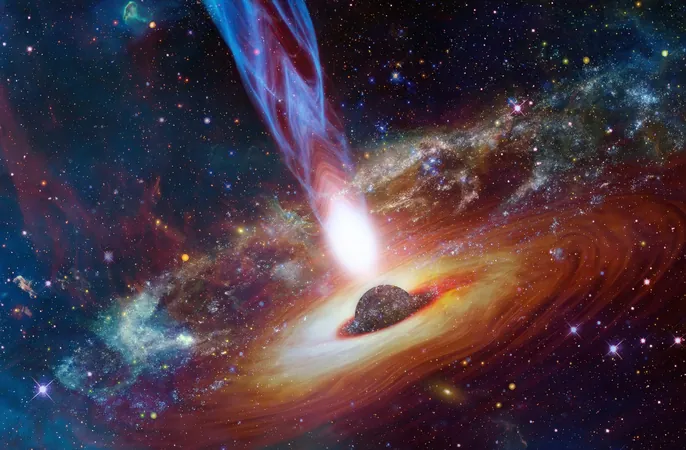
NASA's Shocking Discovery: Is Uranus’s Magnetic Field Not What We Thought?
2024-11-16
Author: Rajesh
NASA's Shocking Discovery: Is Uranus’s Magnetic Field Not What We Thought?
In an astonishing revelation, NASA's Voyager 2, which made history in 1986 as the first and only spacecraft to fly past Uranus, may have left us with a warped understanding of the planet's magnetic field. Recent research published in the prestigious journal Nature Astronomy calls into question the validity of Voyager 2’s initial findings, shedding new light on the complexities of Uranus's magnetic environment.
The Voyager 2 mission provided scientists with unparalleled insights into Uranus, revealing a magnetic field that appeared highly compressed and chaotic, characterized by intense radiation belts and areas surprisingly devoid of plasma. However, new studies suggest that the solar wind—a stream of charged particles released from the Sun—could have greatly impacted the planet's magnetosphere at the time of the flyby. This phenomenon might have resulted in an unusual scenario that distorted the true nature of Uranus during Voyager 2's historic passage.
Researchers now believe that the planetary conditions encountered by Voyager 2—likely occurring in less than 5 percent of the time—created a distinctive "squeeze" effect on Uranus’s magnetosphere. This means that the spacecraft may have captured the planet in an exceptionally heightened state, leading to potentially misleading data about its magnetic characteristics.
Indeed, if Voyager 2 had made its approach even a few days earlier or later, scientists theorize that it could have recorded a much calmer magnetosphere. This raises critical questions about our understanding of Uranus and its atmospheric behavior. The findings underscore a vital point in planetary science: the environments of distant planets, much like Earth, are dynamic and susceptible to solar influences.
Unlike Earth, where scientists routinely observe the effects of solar wind on our magnetic field, Uranus's story is one of ambiguity due to the singular nature of Voyager 2's flyby. As researchers continue to explore Uranus's intricate magnetosphere, they signal a need for more comprehensive studies—perhaps a future mission back to this ice giant might provide the answers we've been searching for.
So, what does this mean for our cosmic understanding? Are we merely scratching the surface of the mysteries surrounding Uranus and other celestial bodies? Stay tuned, as the quest to comprehend the outer planets continues, and who knows what secrets they might still hold!





 Brasil (PT)
Brasil (PT)
 Canada (EN)
Canada (EN)
 Chile (ES)
Chile (ES)
 España (ES)
España (ES)
 France (FR)
France (FR)
 Hong Kong (EN)
Hong Kong (EN)
 Italia (IT)
Italia (IT)
 日本 (JA)
日本 (JA)
 Magyarország (HU)
Magyarország (HU)
 Norge (NO)
Norge (NO)
 Polska (PL)
Polska (PL)
 Schweiz (DE)
Schweiz (DE)
 Singapore (EN)
Singapore (EN)
 Sverige (SV)
Sverige (SV)
 Suomi (FI)
Suomi (FI)
 Türkiye (TR)
Türkiye (TR)